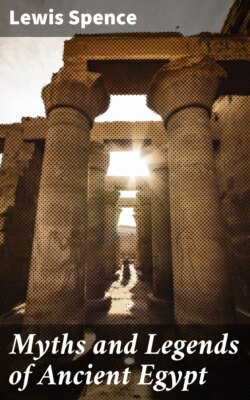Читать книгу Myths and Legends of Ancient Egypt - Lewis Spence - Страница 37
На сайте Литреса книга снята с продажи.
The Priesthood
ОглавлениеThe power and condition of the Egyptian priesthood varied greatly with the passing of the centuries. It was in all likelihood at all times independent of the royal power, and indeed there were periods in Egyptian history when the sway of the Pharaohs was seriously endangered, or altogether eclipsed, by the ecclesiastical party. Vast grants of land had enriched the hundreds of temples which crowded the Egyptian land, and these gave employment to a veritable army of dependents and officials. Under the New Kingdom, for example, the wealth and power of the god Amen rivalled, if it did not eclipse, that of the Pharaoh himself. In the time of Rameses III this influential cult numbered no fewer than 80,000 dependents, exclusive of worshippers, and its wealth can be assessed by the circumstance that it could count its cattle by the hundred thousand head. The kings, however, periodically attempted to diminish the power of the priesthood by nominating their own relatives or adherents to its principal offices.
In early days the great lords of the soil took upon themselves the title and duties of chief priest in their territory, thus combining the feudal and ecclesiastical offices. Beneath them were a number of priests, both lay and professional. But in later times this system was exchanged for one in which a rigorous discipline necessitated the appointment of a professional class whose duties were sharply outlined and specialized. Despite this, however, and contrary to popular belief, at no time did the priestly power combine itself into a caste that was distinctly separate from the laity, the members of which continued to act along with it. Individuals of the priesthood were generally alluded to as hen neter ('servant of the god') or uab ('the pure'). In some localities the chief priests possessed distinctive titles, such as Khorp hemtiu ('chief of the artificers') in the temple of Ptah, or Ur ma ('the Great Seer'—literally, 'Great One of Seeing') at Heliopolis. At Mendes he was known by the title, odd enough for an ecclesiastical dignitary, of 'Director of the Soldiers,' and at Thebes as 'First Prophet of Amen.' Those priests who conducted the ceremonial were known as kheri-heb.
